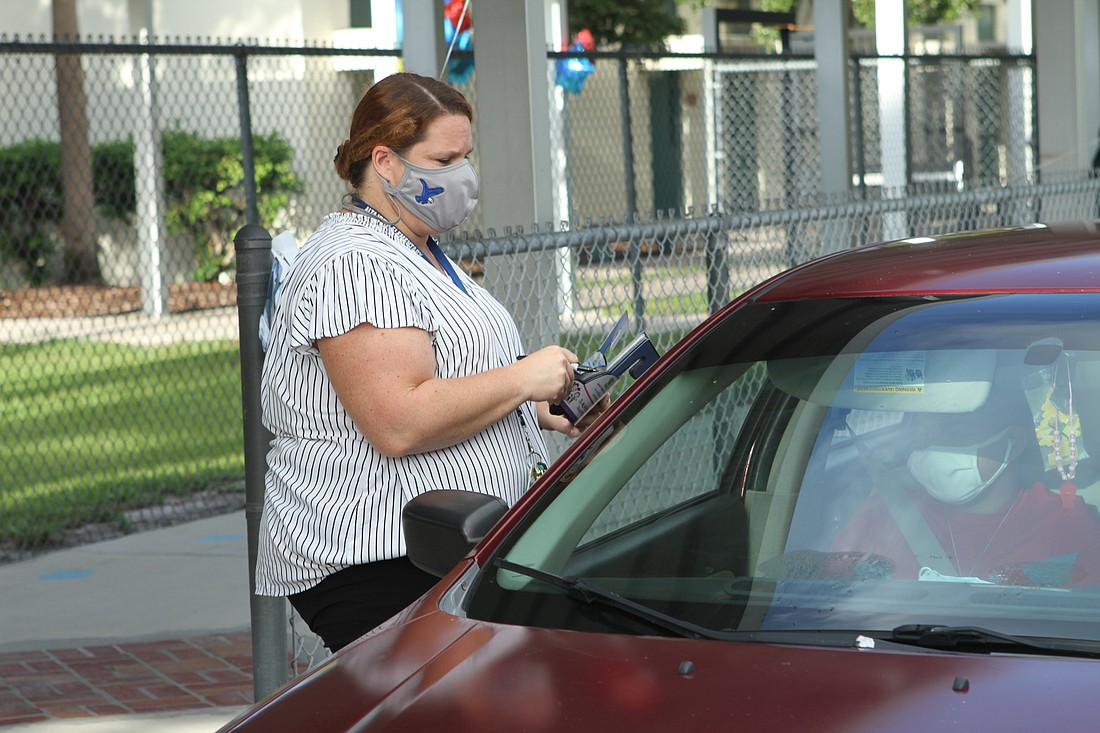- July 5, 2025
-
-
Loading

Loading

W
hen Sarasota County Schools announced its back-to-school plans, Lisa Barnes decided the best option for her ninth grade daughter, Bailey, was remote learning.
Barnes knew Bailey was self-sufficient enough to handle online learning, but she had another reason.
“It allowed more room in the school environment for people that really need to be at school,” Barnes said. “It’s a safer place for some kids to be at school than at home.”
The first few days of school have gone well, Barnes said, with Bailey gaining time by eliminating the drive to and from school and walking between classes. Plus, she hasn’t had to wear a mask.
There have been some drawbacks, however, such as no textbooks or handouts. It’s also harder to raise a question with an online teacher.
But Barnes isn’t the only person who has had to adjust in the first week of class. Teachers across the district have had to adapt to a new teaching style where a portion of their students are in the classroom while the others are remote, and it hasn’t come without its hiccups.
Around 25,000 students, or 70% of the district’s public school students, opted to return to brick-and-mortar schools. Another 28%, or 9,900 students, chose the district’s remote learning option.
Instead of welcoming students back with hugs and classroom games, teachers have had to find ways to get their students accustomed to the new normal, which includes face masks, transparent barriers on desks and interacting with classmates on a screen.
For John O’Shaughnessy, a fourth grade teacher at Emma E. Booker Elementary School, creating a sense of normalcy starts with the learning environment.
He, along with the rest of the fourth grade team at Booker, have created virtual classrooms for their remote students that look similar to their real classroom.
He has also worked to create mostly digital lessons for all his students, so they’re all on an even playing field, and he tries to be a role model for his students when it comes to patience with technological errors or extra safety precautions.
“It definitely hasn’t been easy, but if I’m asking my students to do something, I want to be a model to them,” O’Shaughnessy said. “While it may be difficult to teach with a mask on, I want to show my students that it is possible, and we can achieve our goals together as long as we’re working for the same thing.”
Alana Hodge, an English teacher at Sarasota High School, said she has experienced similar issues trying to connect with remote learners.
All of Hodge’s classes follow the concurrent learning model, with about 10 students in the classroom and 10 students participating from home. Although students in class can see body language and some facial expressions, Hodge said it has been difficult to communicate with remote learners.
So she began carrying a second monitor with her through the classroom to better see students at home and be more attentive to their questions through a chat box.
Although there have been connectivity issues and trouble trying to work various online platforms for assignments, Hodge said most students and teachers are excited to be back on campus.
“There is some anxiety among all students and teachers — I will definitely admit that,” Hodge said. “But overall, people really do want to be here. Students want to learn, and we’re trying to do the best we can to make it a good experience for our students each and every day.”
For fourth grade Southside Elementary School teacher Sarah Bass, the year has been off to an unusual start. She previously taught third grade but moved to a fourth grade classroom this year and kept a lot of the same students.
However, she has about nine remote students and 13 in class, and getting them accustomed to new expectations has not been easy, she said.
“Last year, anytime I was giving a direct lesson, they would be in front of me on a couch or the floor, which would help keep them engaged,” Bass said. “Now we have to be so spaced out, and we can’t do all the things we used to do, like a lot of movement and collaborating with each other. Now it’s so structured that we’re limited on what we can do.”
Bass is still hoping to build strong relationships among students, though. In the first week she played games featuring students in the classroom and at home, and she paired students in class and at home up for small group sessions.
The biggest thing Bass has tried to incorporate, however, is daily emotional check-ins.
“Relationship-building and engagement in learning is always what is most important for a classroom community, and this year just reemphasizes how critical that piece is,” Bass said. “Our students need to feel seen, heard and valued, and we need to work even harder to make that happen this year.”